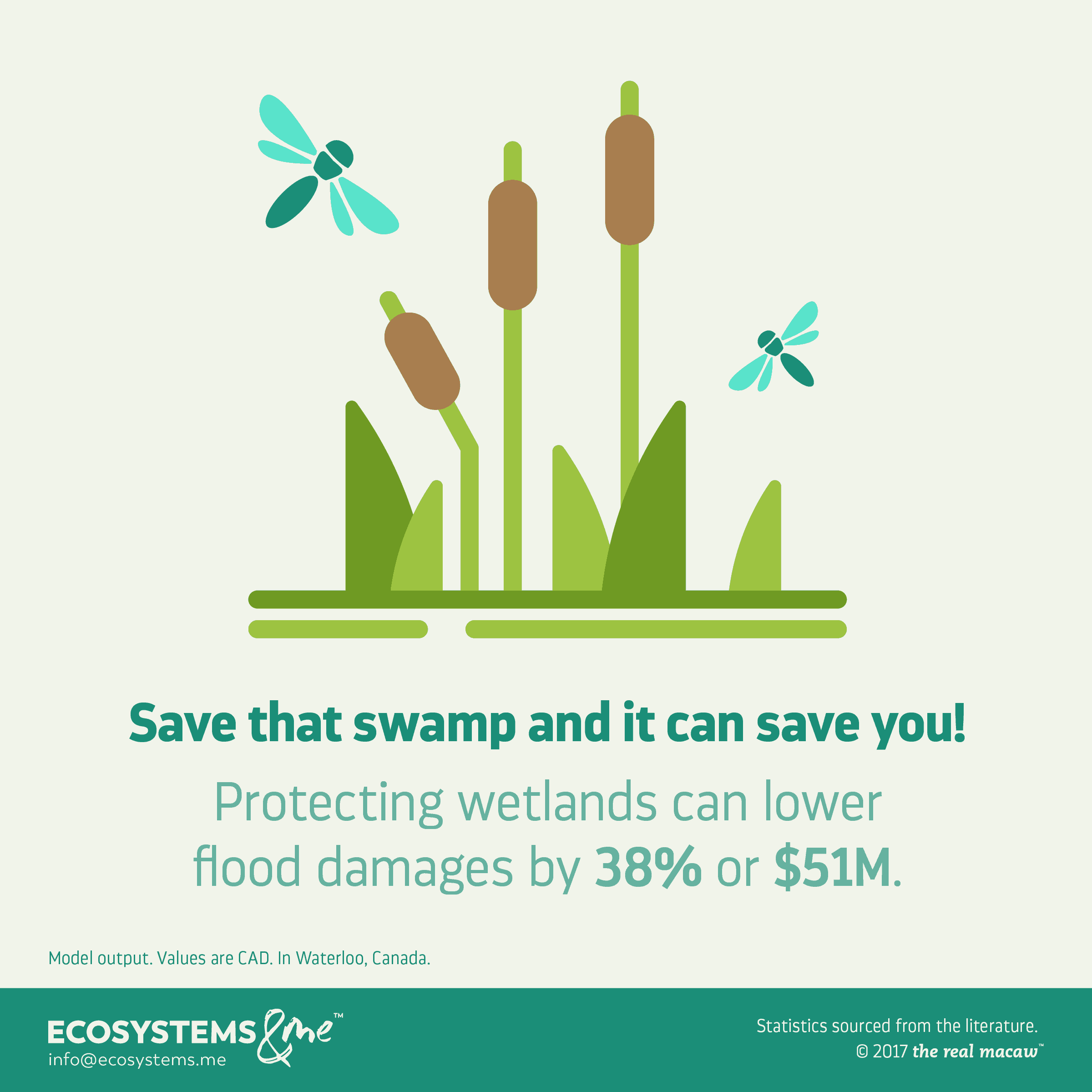
As Grandma dearest says, why would you want to save a swamp? Well, firstly, we insist that ‘swamp’ doesn’t have to be a bad word. Actually, a swamp is just a forested wetland. And Waterloo wetlands can reduce flood damages – by a lot.
Why wetlands work
Surprise! Quick vocabulary lesson.
First, wetlands. As you may expect, wetlands are water-saturated areas. There are many different types: bogs, fens, marshes, muskegs, and what have you, and they all have different types of (aquatic) plants. On top of their natural water absorption ability, these plants also help to buffer extra water, like during torrential rains or when rivers overflow their banks – or when both happen together.
Second, impervious cover. These are man-made surfaces like roads, roofs, and buildings, made from materials which don’t absorb water, like concrete, asphalt, brick, or stone. Because water can’t filter down to the soil below, it ends up flowing overground (called ‘surface runoff’ or just ‘runoff’) until it finds somewhere to go. We build drains and pipes to collect and direct it, but heavy rains or flooding can overload these systems.
When cities expand, natural areas like wetlands are replaced with impervious cover. This means the amount, and speed, of runoff can increase, leading to floods. To make matters worse, extreme events, including severe rainfall, are becoming more common due to climate change. For example, the number and severity of floods in Canada is expected to increase.
A Waterloo flood
The City of Waterloo is in (and actually contains most of) the Laurel Creek watershed, which is itself part of the watershed of the Grand River, one of the largest rivers in Southern Ontario. Sadly, much of its original wetland area has been converted to urban or agricultural areas over the last century.
So what of a Waterloo flood? Well, in real life, we can’t really compare flood damages with and without wetlands. But a model can test what would happen with a hurricane-level event (remember, extreme events are becoming more common) in two cases: if wetlands stay at current levels, or if they are all converted to agricultural land.
If wetlands are all converted, then without their buffering ability, water floods many more buildings (including homes and offices). That’s why damages would be CAD $51 million (38%!) worse.
And that’s just for conversion to agriculture. Converting wetlands to urban areas, which have more impervious cover, would make flood damages even worse. So would losing ‘hummocky’ terrain – land with dips and bumps that can collect water. (That’s ‘hummock’, not ‘hammock’.)
This story is about Waterloo. But it’s also generally true for any wetland. So, wherever you are, just remember: swamp saves you.
- Canadian Wetlands
